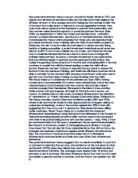Parent-Offspring Conflict
PI does however largely neglects the offspring and as such passes it off as a passive factor in the process. But that isn’t necessarily true. Parental investment is largely based on the assumption that parents go for the allocation of resources that benefit themselves the most, whereas the child would obviously attempt the opposite.
For example, the most common of the more dangerous complications for pregnant women, pre-eclampsia, is caused by the infant pressuring the woman’s body into giving it more nutrients through the secretion of certain hormones. This heightens the woman’s blood pressure, allowing more nutrient-filled blood to be passed to the foetus, but at the same time endangering the woman (and consequently itself) in the process. This boost of nutrients however is associated with an increase in size and health of babies, as evidenced by Xiong et al. (2000).
When offspring are still in their infancy, parents usually invest more of their resources to them, so as to ensure their survival and fitness. However, new offspring arrives, the focus once more shifts to them, as they can better afford to divert their attention and resources to them, rather than the older and less helpless offspring. But as the older offspring is less eager to relinquish their allocated resources, they will try to prolong their parents’ focus on them in order to further increase their own fitness. It is in these moments of focus-shift that parent-offspring conflicts are greatest. This conflict does however also lead to sibling rivalry, as each offspring will want their ‘fair share’ of parental attention and as such will compete with each other for it.
2 – Supporting/challenging studies
Sex differences:
Buss et al. (1992) – Buss found that among US students, males were more concerned with sexual infidelity, where women were more concerned with emotional infedelity. This seems to support the ‘Sexual and emotional jealousy’ theory, in that men are indeed more worried about cuckoldry, where women are more concerned about loosing the resources the man provides. Of course, this study isn’t entirely trustworthy, as there are a number of methodological issues concerning it – for starters, the study was based in the US, which evidently leaves it with very little ecological validity. The study was also focused mainly on students, which is a very narrow age-group, and as such couldn’t reliably be generalised to all ages, say for examples elderly people (their opinions might differ).
Geher et al. (2007) – Geher found in a study of 91 non-parent heterosexual undergraduates, who completed a perception scale based on parental investment, that there were no clear sex differences in the self-reports to parenting, but did however find that there was a significant difference in ANS arousal. Males showed a significant increase in heart rate when presented with scenarios that emphasised the costs of parenting, for example being unable to work. This seems to support the PI theory in assuming that males a biologically less prepared for parenting and the issues that come with it.
But in the case of this study, the sample is quite small with only 91 people, which doesn’t really make it very reliable nor allow it to be generalised to the rest of the world. Furthermore, the validity of the study is debatable – e.g. the raised heart rate may be caused by extraneous variables rather than the confronting question.
Parent-Offspring conflict:
Andrews (2006) – Andrews conducted a survey on 1600 US adolescents and found that severe suicide attempts were significantly more common among middle-born children when compared to first and last-borns. His hypothesis was that this was a cry out for attention in order to extort an increased investment from their parents, which would support the PI theory, in that children adapt to achieve parental investment.
While the study could well be considered reliable in terms of the quantitative data, there are however issues regarding the qualitative of it. For example, the sample was taken in the US, which limits the validity of the data, as it can hardly be generalised – the upbringing of American middle-borns may be different and might simply promote suicidal tendencies.
Furthermore, the sample is focused on adolescents only – which isn’t really applicable to any other age groups, as teenagers are generally speaking hormonal time-bombs and the middle-borns may be simply affected by that, rather than apparent parental neglect.








